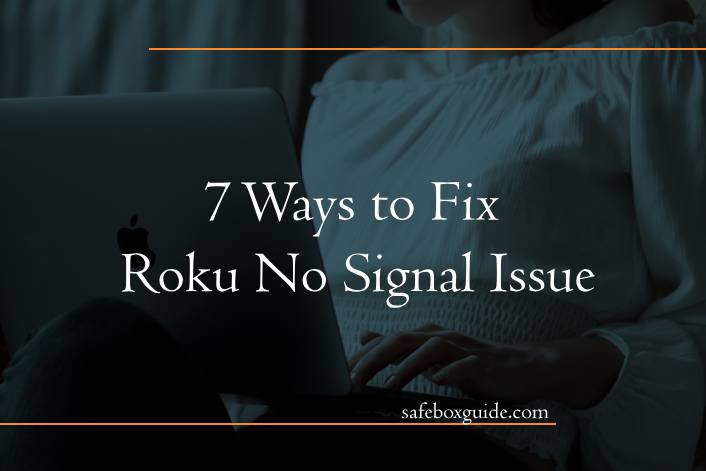Roku streaming devices have revolutionized the way we consume digital content, offering a vast array of channels and services. However, like any electronic device, Roku players can encounter issues, and one of the most common frustrations is the “No Signal” problem. If you find yourself staring at a blank screen with this message, fear not. In this comprehensive guide, we’ll explore seven effective ways to troubleshoot and resolve the Roku “No Signal” issue, ensuring uninterrupted streaming bliss.

Contents
1. Check Physical Connections
Inspect HDMI Cables
– Start by checking the HDMI cables connecting your Roku device to the TV. Ensure they are securely plugged into both the Roku device and the TV’s HDMI port. Consider using high-quality, certified HDMI cables for optimal performance.
Power Supply
– Verify that the Roku device is receiving power. Ensure the power cable is securely connected, and if you’re using a power strip, confirm that it is functioning correctly. Try plugging the Roku device directly into a power outlet.
2. Select the Correct Input Source
TV Input Selection
– Use your TV remote to select the correct input source. Sometimes, the TV might be set to a different input channel, leading to a “No Signal” message. Cycle through the available input sources until you find the one associated with your Roku device.
Roku Input on TV
– If your TV has multiple HDMI ports, make sure you’ve selected the one where the Roku device is connected. TVs often label the HDMI ports, so check for labels like “HDMI 1,” “HDMI 2,” etc., and select the corresponding input.
3. Restart the Roku Device
Power Cycle
– Turn off the Roku device by disconnecting it from the power source for about 10-15 seconds. Reconnect the power and wait for the device to restart. This simple power cycle can resolve temporary glitches causing the “No Signal” problem.
Remote Restart
– If your Roku device is not responding, you can also restart it using the Roku remote. Navigate to the Settings menu, select System, and then choose System Restart. Confirm the restart, and check if the “No Signal” issue persists.
4. Check TV Display Settings
Resolution Settings
– Ensure that the Roku device’s resolution settings match the capabilities of your TV. If the Roku is set to a resolution that your TV doesn’t support, it can result in a “No Signal” error. Adjust the resolution settings in the Roku device’s display settings.
Auto-Detect Display
– Enable the auto-detect display feature on your Roku device. This allows the Roku to automatically adjust its output resolution based on your TV’s capabilities. Navigate to Settings, Display type, and select “Auto detect.”
5. Update Roku Software
Check for Updates
– Outdated software can lead to compatibility issues. Ensure your Roku device is running the latest software version. Navigate to Settings, System, and select System update to check for and install any available updates.
Manually Update
– If your Roku device doesn’t automatically update, you can initiate a manual update. Go to Settings, System, and then System update. Select “Check now” to see if there are any updates available, and follow the on-screen instructions to install them.
6. Inspect HDMI Ports and TV Compatibility
Use a Different HDMI Port
– If you’re still facing the “No Signal” issue, try using a different HDMI port on your TV. The current HDMI port may be faulty. Plug the Roku device into another HDMI port and check if the problem persists.
Test on Another TV
– To rule out TV-specific issues, test the Roku device on another TV. If it works without any problems on a different TV, the issue may be related to your original TV’s HDMI ports or settings.
7. Factory Reset
Perform a Factory Reset
– If all else fails, consider performing a factory reset on your Roku device. Be cautious as this will erase all settings and preferences. Navigate to Settings, System, and then Advanced system settings. Select Factory reset and follow the on-screen instructions.
Reconnect and Set Up
– After the factory reset, reconnect the Roku device, set up your preferences, and check if the “No Signal” issue is resolved. This step should only be considered as a last resort after exhausting other troubleshooting methods.
The Roku “No Signal” issue can be a frustrating obstacle to your streaming experience, but with these seven effective troubleshooting methods, you’re well-equipped to tackle the problem head-on. From checking physical connections to performing a factory reset, these steps cater to various potential causes of the issue. Remember to approach the troubleshooting process systematically, and you’ll likely find a solution that brings your Roku device back to seamless streaming functionality.

